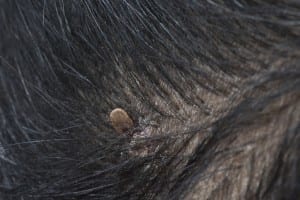As summer temperatures rise, residents of New Jersey and other parts of the Northeast will head outside to enjoy the warm weather with family and friends. Unfortunately, the summer’s arrival means that tick-borne disease season is also here.
Lyme disease is one of the most serious tick-borne illnesses and typically arises in the Northeast, mid-Atlantic region. Named after an outbreak in Lyme, Conn., in the 1970s, Lyme disease is spread by the blacklegged tick. It is the most common tick-borne disease in America, and its prevalence is growing. The current number of cases Tick per year, which is around 300,000, has tripled in the past 20 years. In fact, a recent article published on Time Magazine says that Lyme disease is becoming more prevalent in states outside of the Northeast. The Center for Disease Control and Prevention (CDC) warns that climate change is aiding in the spread of this potentially fatal disease. Ticks thrive in densely forested areas and their populations are usually kept in balance by predatory white mice who feed on them. Recent increased deforestation efforts across the country have dramatically decreased the white mice population; therefore helping tick infestations spread across the county, virtually unhindered and unchecked.
People can contract Lyme disease when a tick bites them and stays attached to their skin for at least 24 hours. Small ticks known as nymphs cause the most infections. Symptoms can show up any time from a few days to a month after infection and include fatigue, headache, fever and a slowly growing circular rash. Without treatment, the disease can impact joints, face muscles, your heartbeat and even your cognition. Ticks can also attach to household pets. Lyme disease can even be fatal.
Most Lyme disease is treated with two to four weeks of antibiotics. However, approximately 10 percent of Lyme patients can experience symptoms months or years later. Doctors have labeled the condition post-treatment Lyme disease syndrome, or PTLDS. Treatment of PTLDS is controversial. Some doctors and advocates promote long-term antibiotic treatment to manage the condition, while others claim the antibiotics have no real impact. Studies are ongoing to learn more about possible causes of and treatments for PTLDS.
The Department of Health Suggests Taking These Measures if You Find a Tick Attached to Your Skin:
- Using tweezers, grasp the tick as close to the skin as possible.
- Gently pull the tick in a steady, upward motion.
- Wash the area with a disinfectant.
When trying to remove the tick:
-
- DO NOT touch the tick with your bare hand
- DO NOT squeeze the body of the tick as this may increase your risk of infection.
- DO NOT put alcohol, nail polish remover or Vaseline on the tick
- DO NOT put a hot match or cigarette on the tick in an effort to make it “back out.
- DO NOT use your fingers to remove the tick.
Professional Tick Control: NJ Counties
Treating wooded areas with the most effective tick control NJ has to offer will help keep your property safe, especially during the incoming summer months when outdoor activity increases. The threat of Lyme disease is serious. Tick risks are high and Lyme disease can even be fatal if not treated properly. The most professional tick control NJ has to offer also provides same day service and free at-home inspections in most NJ counties including Bergen and Passaic. A thorough property evaluation can identify problem areas in your outdoor areas. Call today to talk to us about securing your property against the threat of harmful ticks (866) 971-2847 or contact us online.






